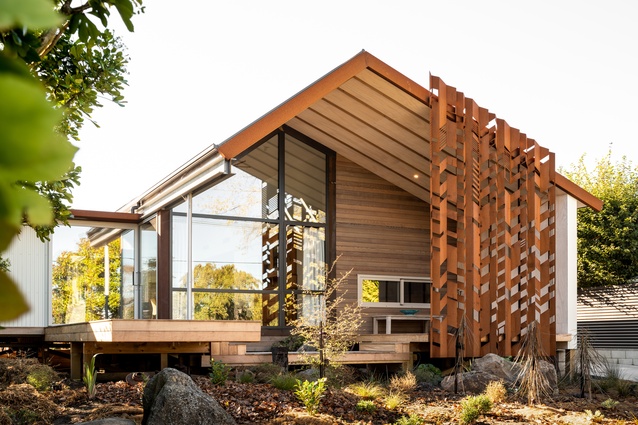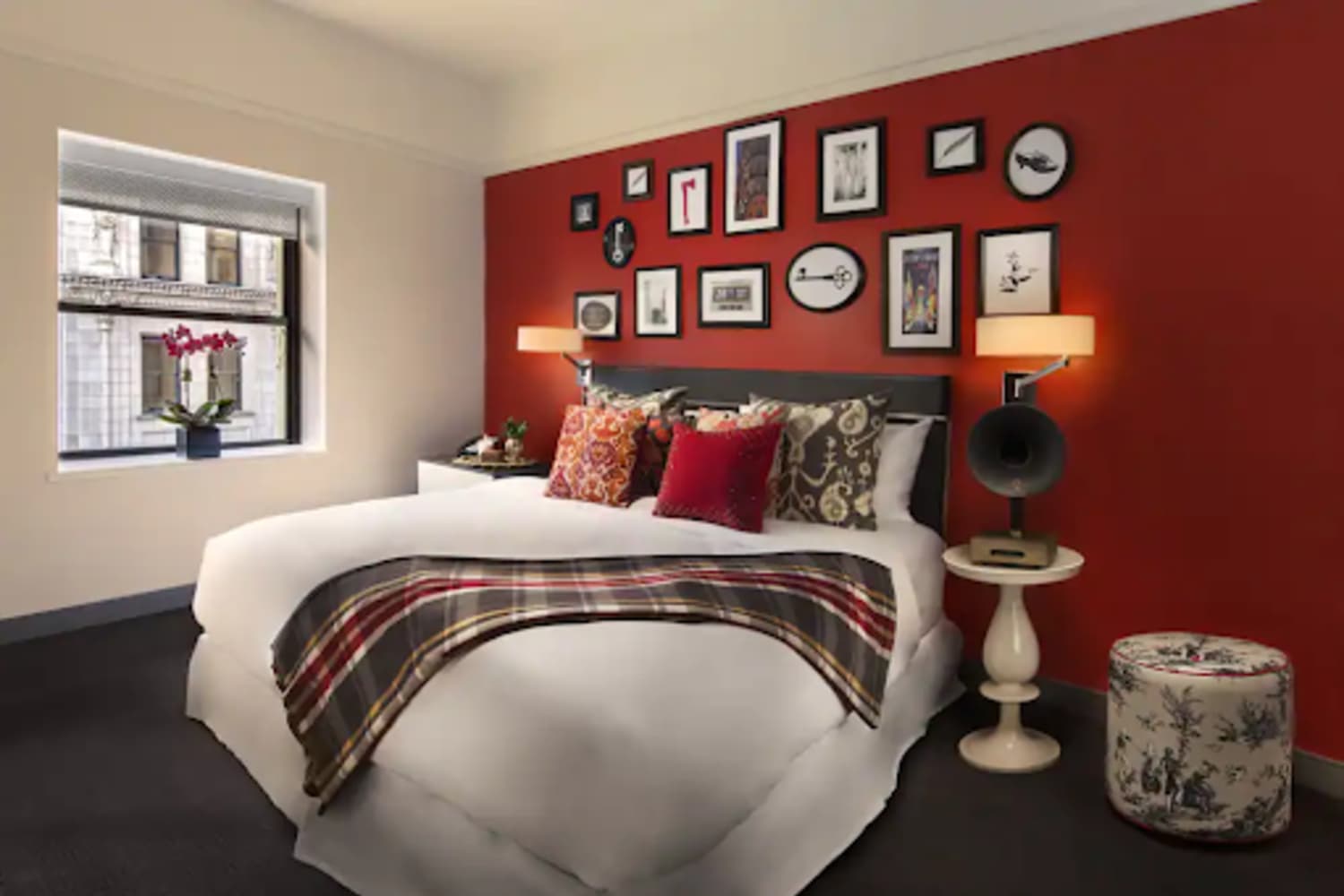[ad_1]
Built next to a river in the city’s flood management area, the house was cited by judges as exemplifying how architectural design can transform an uninspiring site into something beautiful.
Constructed for a retired couple keen to reduce maintenance commitments while still creating a house which was tailored to their needs, the brief included easy accessibility and good building performance, along with an art studio and motorcycle workshop. Brady’s design also had to meet a required floor level of 1.4m above ground, and deal with tough rules on earthworks and filling on a narrow lot with a significant road setback from the river.
“What do you do when you are in a flood management area and the minimum floor level is 1.4m off the ground?” Brady says. “We think high pile stilts, a good amount of raised decking, an open subfloor for drainage, a ramp to raised parking and reduced steps to the house, drop the cladding skirt and areas of decking around the house so it doesn’t overbear. Throw in a custom steel screen for privacy on your raised deck and maybe a wharf for a rainy day.”
In awarding Brady the Supreme Award, the panel remarked that the project “is one of those buildings where the more you keep looking, the more you find. There is nothing exceptional about the site to exploit, there is no stunning view, no native bush, no flowing stream, and no heritage setting, no inspiration is present. Instead, this unforgiving site presents two direct difficulties – a long thin plan and a high ground water level. But yet, what has been produced here is an outstanding design.”
See all of the winning projects for 2021 below with jury citations:
Supreme Architectural Design Award and Residential New Home between 150m2 and 300m2 Architectural Design Award
Swamp Dwelling by Ben Brady of Linetype Architectural

Dennis Radermacher
“This is one of those buildings where the more you keep looking, the more you find. There is nothing exceptional about the site to exploit, there is no stunning view, no native bush, no flowing stream, and no heritage setting, no inspiration is present. Instead, this unforgiving site presents two direct difficulties – a long thin plan and a high ground water level.
But yet, what has been produced here is an outstanding design.
The extended gable to the front creates a sheltered link to the exterior landscaped areas; and a finely crafted folded perforated Corten screen creates a complementary screening and sheltering element to the front deck and elevation. A stepped deck softens the height of the exterior elevation inside and throughout the design is exquisitely detailed and consistent.
When you peel back the engaging and pleasing skin of this building, underneath you find the solid bones of a set of well-understood, eco-friendly technologies and design solutions. Out of the swamp has risen a sophisticated but unassuming beauty.”
Residential New Home over 300m2 Architectural Design Award
Folded Roof Home by Craig South of South Architects
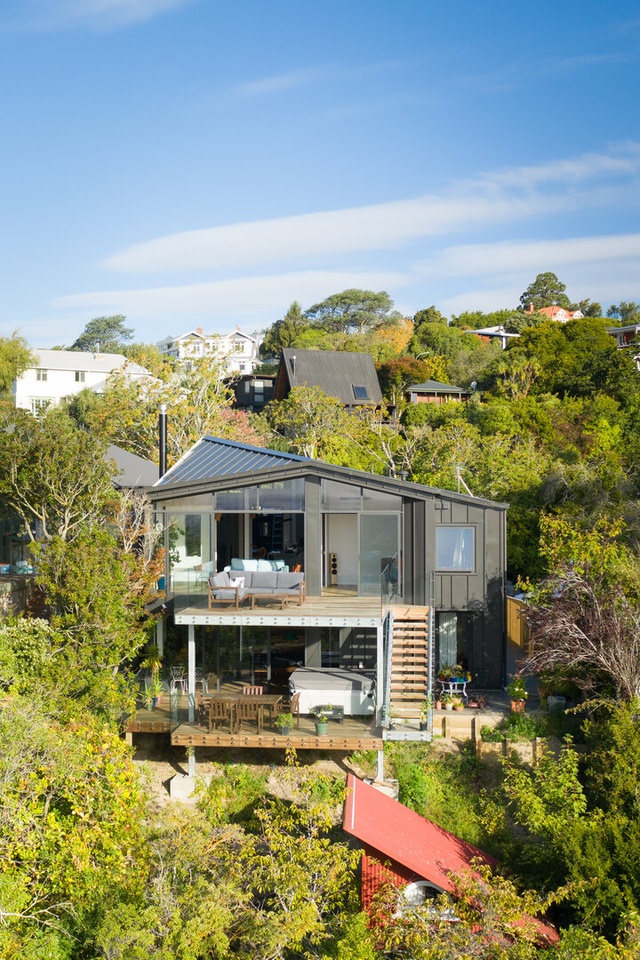
Sarah Rowlands
Built on a narrow street façade, this home was recognised for its use of a folded roof form to guide visitors up through the interior spaces toward a view of the Southern Alps.
“This is a thoughtful and inventive design. Dynamic space planning has been employed particularly well to resolve issues and exploit the full potential of this challenging site. The folded roof planes are set up to complement the spatial planning. The light is let in through clerestory openings which work in beautiful tandem with the interiors. This is a scheme where three dimensions are needed to tell the story and where the elevational drawings struggle to illustrate how the folded roof form has been employed with great poise.”
Multi-Unit Dwelling Architectural Design Award Sponsored by MiTek
Peterborough Housing Co-operative by Craig South of South Architects
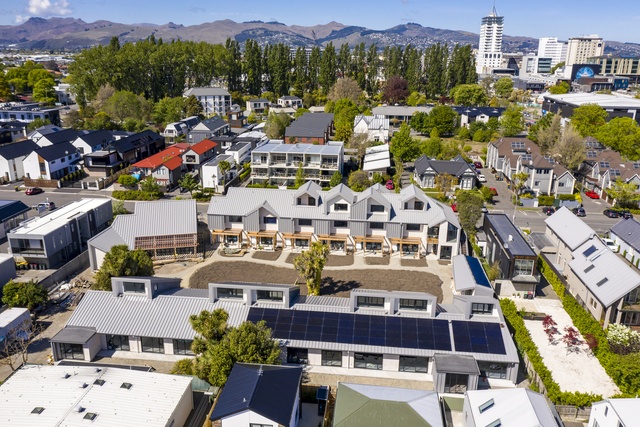
Craig South
Built following the Canterbury earthquakes, the co-operative is based on the philosophy of co-housing, which emphasises community space and connection while isolating carparking.
“What we have here is a project that is both very well-executed and very timely. The result is a particularly well-conceived co-housing scheme that exemplifies the potential for an increasingly important approach to multi-unit living in New Zealand. Efficiently and sustainably designed individual units have access to shared amenities including a common garden area and a large space for whānau to gather for important events. Planning and spatial arrangements consistently support the idea of creating a community, and these ideas are then carried through to the more detailed aspects within the scheme. All of this is then underpinned by a fundamental and comprehensive approach to carbon neutrality and wider sustainable living issues.”
Commercial Interiors Architectural Design Award Sponsored by GIB
Te Hononga, Hundertwasser Memorial Park by Pip Bolton of Avail Pacific Limited

Jess Burgess
Built to honour Friedensreich Hundertwasser, the park includes a public library, community workshop, interpretive centre with video and audio displays of local relationships with Hundertwasser. The panel cited the role of the community in lovingly crafting the project with passion and determination, noting the involvement of local Ngāti Hine artists in leading a Kaupapa which is expressed throughout the building.
“This project exemplifies the whakatauki “Ehara taku toa i te toa takitahi, ēngari taku toa he toa takatini,” (success is not the work of one, but of many). This is a thoughtful and creative reinterpretation of Hundertwasser’s ideas and a careful blend of cultural narratives incorporating Hundertwasser, Māori, local artists and crafts people. The rammed earth construction and the locally sourced raw materials assist in making this significant project memorable.”
Residential Alterations and Additions Architectural Design Award
Over the Fence by Adam Taylor of ata
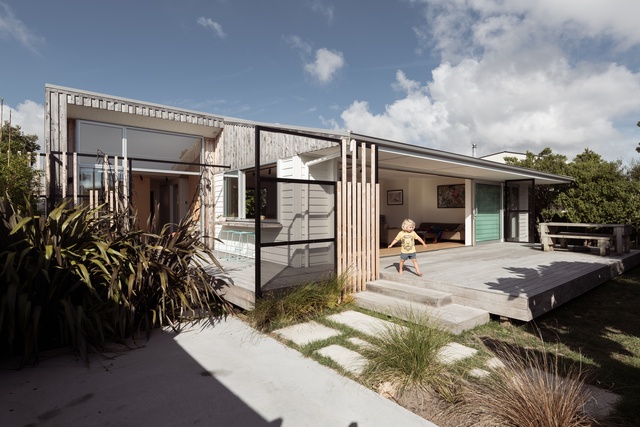
Media Masters
Built to accommodate a young family and engage with the sunny yards, the project’s brief called for the expansion of living spaces along with the connection of individual zones.
“This is an authentic, laid back, low-key design for a bach extension, utilising a fantastic array of materials and the integration of landscape elements. The designer has managed to upgrade an existing house while also maintaining the tradition of a kiwi bach, evoking emotions of summer holidays, think wet togs, sandy floors, and jelly tip ice creams. The design demonstrates an excellent understanding of the site and the wants and needs of the client. The sustainability credentials are very impressive, as is the simple weatherboarding that creates a new look and feel while also complementing the other materials that have been introduced. The manipulation of materials and form to blend old with new is a particular strength in this project. The result is an outstanding example of a creative design solution with minimal environmental impact.”
Resene Residential Interiors Architectural Design Award
The Christchurch Style Revival by Greg Young and Andy McLeod of Young Architects
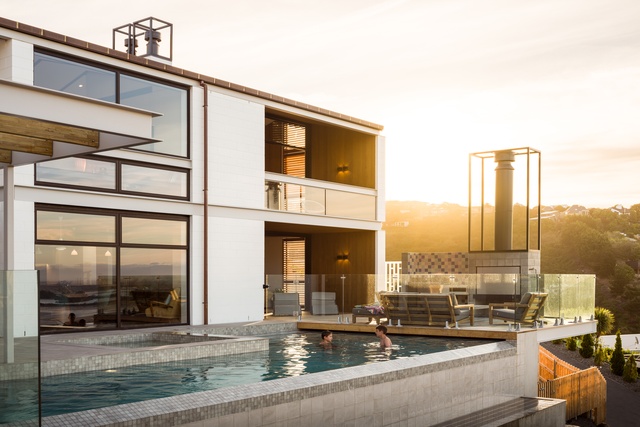
Dennis Radermacher
Influenced by The Christchurch Style of architecture, the project was recognised by the panel for updating the use of technology and engineering to the best practice wherever possible.
“Careful and well-controlled articulation of a rich material palette has contributed to a very successful interior in this project that both respects and references the Christchurch style with a clear authority and understanding. Concrete and timber sit alongside each other to set up the primary visual experience. Timber adds to the warmth and richness and this is successfully contrasted against the harder bleached surfaces that the concrete provides the base for. Planning is also controlled particularly well. Interior to exterior flow is carefully crafted with a continuation of materials and excellent attention to detailing. Careful control of natural and artificial lighting is a final key to a very well-articulated solution that creates a set of refined interior spaces.”
Commercial/ Industrial Architectural Design Award
New New New Residence by Mike Stevenson of Stevenson Design
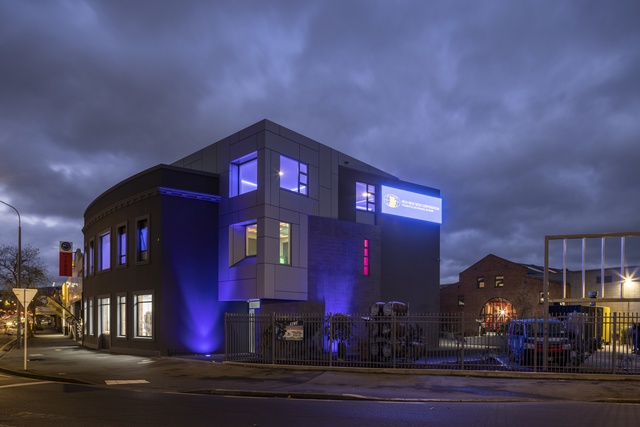
Graham Warman
Built behind a façade constructed in the late 19th century, the project was commended by judges for overcoming the resulting challenges.
“A playful design, with a complex and intriguing layout. Unexpected use of fluorescent light and colour, gives this boutique hotel an ethereal quality. These surprises are all hidden behind the original façade. The judges hope that the designer gets another opportunity to push the boundaries of public building design using the skills displayed here.”
Residential New Home up to 150m2 Architectural Design Award
Moonlight Bay by Tane Cox of Red Architecture
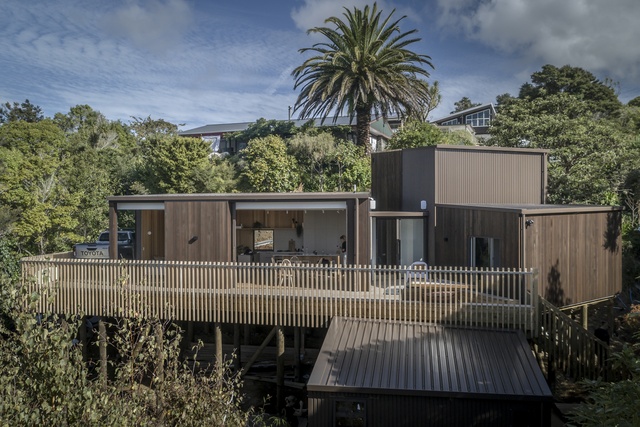
Larnie Nicolson
Along with a brief for a refined, enjoyable, flexible, and robust dwelling, design considerations included maximising a small site, managing a steep contour and sheltering from the westerly wind while creating spaces that were suitable for adults, kids and guests.
“These four enclosed pods, situated on a steep site, are cleverly huddled together to create a series of interstitial terraces. The result is a design that is very well-conceived with a fantastic indoor-outdoor connection that exploits the site to its maximum potential. The pods themselves can be seen as independent spaces or as a linked set. Overall, the cluster is beautifully scaled with the material and colour palette sensitive to, and inspired by, the bush that the project nestles in.”
Resene Colour in Design Award
Walker Street by Mitchell Coll of Coll Architecture and Pippin Wright-Stow of F3 Design
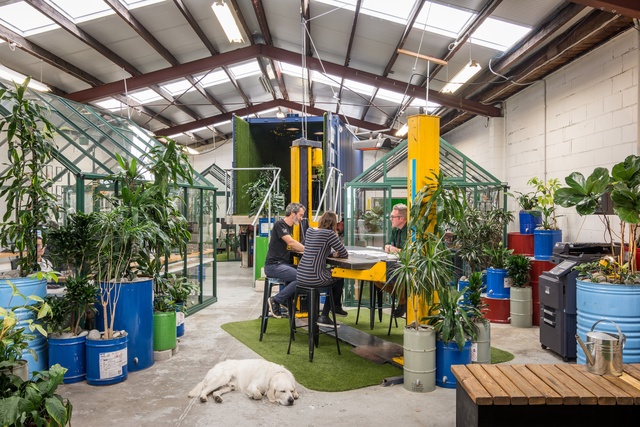
Walker Street by Mitchell Coll of Coll Architecture and Pippin Wright-Stow of F3 Design. Image:
Mick Stephenson
Intended as an alternative from the standard office design, the project was recognised by the judges for accommodating a variety of working styles.
“Vivid blues, fire engine reds and industrial yellows contrast against historic fixtures, salvaged materials and greenery to bring energy and optimism to this eclectic work space. The bold colours have been used to highlight the unique fixtures of the space and boost creativity within the alternative working environment. The glasshouses have been coloured in forest greens and vivid whites to blend themselves into their natural environment and create a sense of privacy within the open, collaborative space. Brave colours, industrial fixtures and hidden depths celebrate the workshop’s history and enhance the wellbeing of the workers and their clients.”
[ad_2]
Source link

